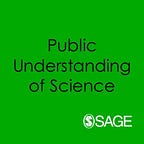Atomic Bill: A Journalist’s Dangerous Ambition in the Shadow of the Bomb
Review by Declan Fahy
Based on extensive archival research, the close analysis of Laurence’s wartime dualities and his other compromises is the book’s strength. It shows the harmful impact that proximity to power can have on science journalists and, ultimately, their publics.
Researchers have produced reams of studies of science journalism, but they have overlooked individual science journalists. This is a significant oversight, as many reporters were notable cultural figures in their own right, holding enormous cultural and political influence in different historical periods and places as disseminators and interpreters of science and technology, often infusing their work with their own personalities, values, and perspectives on science.
However, their contributions have been missed by almost all social scientific studies of science news that have aggregated the work of many science reporters to produce large-scale, generalisable findings about science journalism. The distinctive contributions of particular journalists, as a consequence, have become diluted, forgotten, and, eventually, erased.
Atomic Bill by Vincent Kiernan is a welcome counterpoint to this trend. It presents an engaging historical account of the career of William Leonard Laurence, one of the most influential American journalists of the mid-20th century, who chronicled the advances and terrors of the nuclear age for his millions of readers. Laurence reported on science for more than three decades at the New York Times, where his colleagues called him Atomic Bill to separate him from political writer William H. Lawrence, whom they called Political Bill.
Atomic Bill was best-known for his wartime reporting of nuclear weapons. He was on board one of the planes on the mission that dropped the atomic bomb on Nagasaki and his reportage of that world-historical event was part of a series of articles that earned him a Pulitzer Prize. But it was his wider involvement with the American wartime atomic endeavour that has made him controversial or notorious as a science journalist.
As this well-written book argues, Laurence went beyond documenting the drama of nuclear weapons to become a protagonist in its story. While at the New York Times, he was asked to work on the Manhattan Project after its leader, Lt. Gen. Leslie R. Groves, the book notes, “decided he needed someone to write his own rough first draft of history — a set of press releases that would lead the public to accept the atom bomb after it was used in Japan”.
On leave from the paper, Laurence wrote much of the material that was used to mould public opinion about the bomb and its effects. The book argues that he was an enthusiastic and conscientious supporter of his country’s military aims, a role that was at odds with his obligations to journalistic independence. As to his role on the mission to Nagasaki, the book argues that “Laurence certainly identified himself as part of the bombing crew rather than as an observer of it”.
Historians of nuclear weapons have offered critical interpretations of Laurence, characterising him as a willing propagandist for nuclear militarisation. But Atomic Bill takes a broader focus, arguing that Laurence’s wartime compromises were among a succession of lapses in journalistic ethics that punctuated his long career. At various times, the book shows, Laurence was, essentially, being paid for writing work by agencies whose activities he was meant to report impartially.
The book argues that his compromises were fuelled by his slavish deference to his powerful sources, and his constant desire for money and status. The final ruinous compromise, the book argues, was Laurence’s public support for the New York World’s Fair of 1964–65. He was paid to advocate for the event, while he still reported on science for the New York Times, a glaring conflict of interest that led to his forced retirement from the paper.
Based on extensive archival research, the close analysis of Laurence’s wartime dualities and his other compromises is the book’s strength. It shows the harmful impact that proximity to power can have on science journalists and, ultimately, their publics. However, the book is less persuasive when it evaluates Laurence’s influence on contemporary science journalism. His legacy, it argues, can be seen among his many journalistic “descendants” who remain largely uncritical in their coverage of scientific institutions and government.
Instead of holding science to account, these reporters follow the example of Laurence, who, the book’s blurb argues, set the trend to “prioritize gee-whiz coverage of discoveries”. That is a lot of influence to attribute to a single journalist in one country, especially when the phenomenon of uncritical coverage is international, and has many points of historical origin. As other scholars have argued, the tendency towards uncritical coverage is also due to social forces on journalism, such as commercial pressures, the editorial orientation of science publications, as well as the sociology of science news production, one aspect of which Kiernan illuminated in Embargoed Science (2006), his important study of how journals have orchestrated science news. Nevertheless, Atomic Bill is a contribution to scholarship in the field, as it brings to vivid life a complex science journalist who had undoubted influence at a critical juncture in modern history.
Declan Fahy is an Associate Professor at the School of Communications, Dublin City University, Ireland, where one of his research interests is health, science, and environmental journalism.
